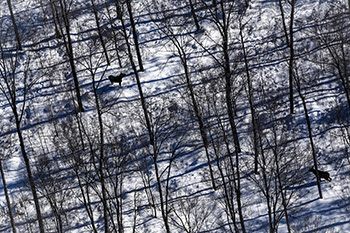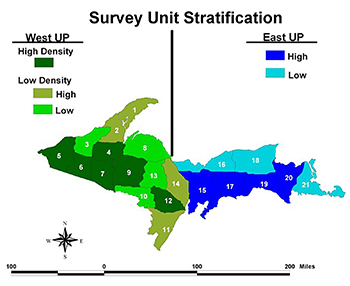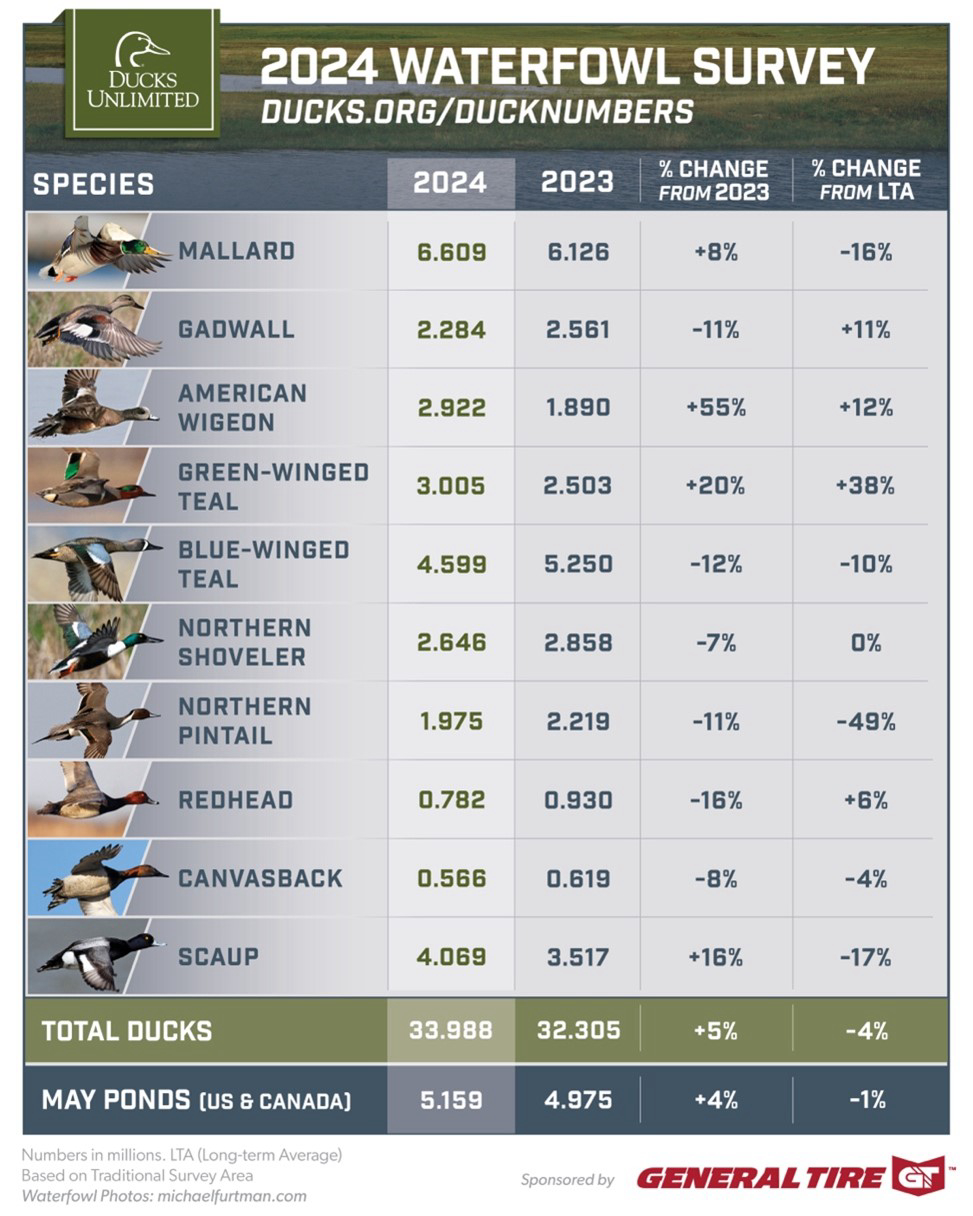MI DNR moose survey results estimate a population increase


Michigan Department of Natural Resources wildlife biologists estimate the number of moose in the western Upper Peninsula core population area at 378 animals, up from 285 in 2015.
“Our survey findings this year are encouraging because a possible population decline detected in 2015 was transitory,” said Dean Beyer, a Michigan Department of Natural Resources wildlife research biologist who organizes the sampling and generates the estimate for the biannual survey effort.
The results were reported to the Michigan Natural Resources Commission Thursday at a meeting in Houghton. A moose hunt in Michigan is not currently being considered.
Moose are found in Michigan at Isle Royale National Park and in two population areas on the mainland of the Upper Peninsula.
The western U.P. moose range covers about 1,400 square miles in parts of Marquette, Baraga, and Iron counties. The population there is the result of moose reintroduction efforts in 1985 and 1987.
An eastern U.P. moose population, spread across portions of Alger, Schoolcraft, Luce and Chippewa counties, is estimated to contain fewer than 100 moose ranging across a 1,200-square-mile area. This population was not surveyed by the DNR.
Surveys of moose in the western U.P. are conducted every two years from fixed wing aircraft. Roughly 30 plots are surveyed within the high-density core population area and about 15 more randomly selected plots surrounding the core in a low-density zone.
However, winter weather conditions prevented some survey flights this year, which did not allow researchers to complete the winter 2016-17 moose survey of some low density transects.
“This will not allow us to estimate moose abundance throughout the entirety of the western U.P. moose range,” Beyer said. “However, we were able to generate an estimate for the core area. In the past, this core zone has supported 80 to 90 percent of the population.”
Prior to this year, the most recent moose survey was conducted in January 2015 to estimate moose abundance in the western Upper Peninsula.
At that time, DNR researchers observed 187 moose during the survey and estimated a population of 323 animals using a sight-ability correction model. The 2015 estimate declined about 28 percent from the estimate of 451 moose in 2013.
“Statistically speaking, the confidence limits of the 2013 and 2015 estimates overlapped, so we could not say with statistical confidence that the population decreased,” Beyer said. “However, for the first time, we did observe a decline in the proportion of calves in the population, suggesting a population decline may have occurred.”
The percentage of calves in the moose population was 22 percent in 2013, 17 percent in 2015 and 19 percent this year.
“We will continue to monitor the percentage of calves in the population as this is an important indicator of the viability of the moose population over the long-term,” Beyer said.
Researchers think the survey this year, if completed, would have yielded a total western U.P. population estimate of between 420 and 470 animals.
Given the 2015 moose potential decline and the Moose Hunting Advisory Council’s recommendation to only allow hunting if a growth rate of greater than 3 percent is maintained, the DNR did not recommend implementing a moose harvest in 2015.






